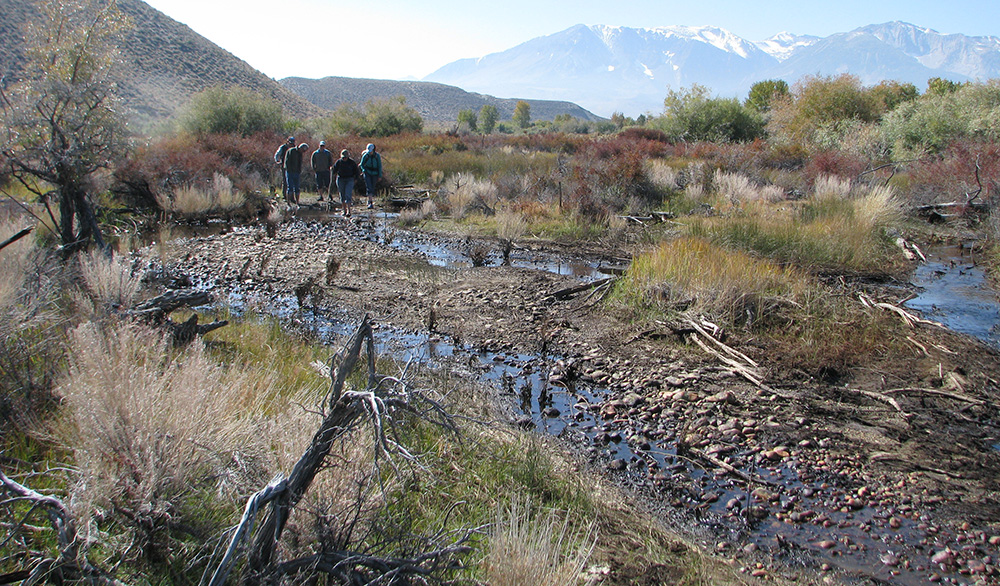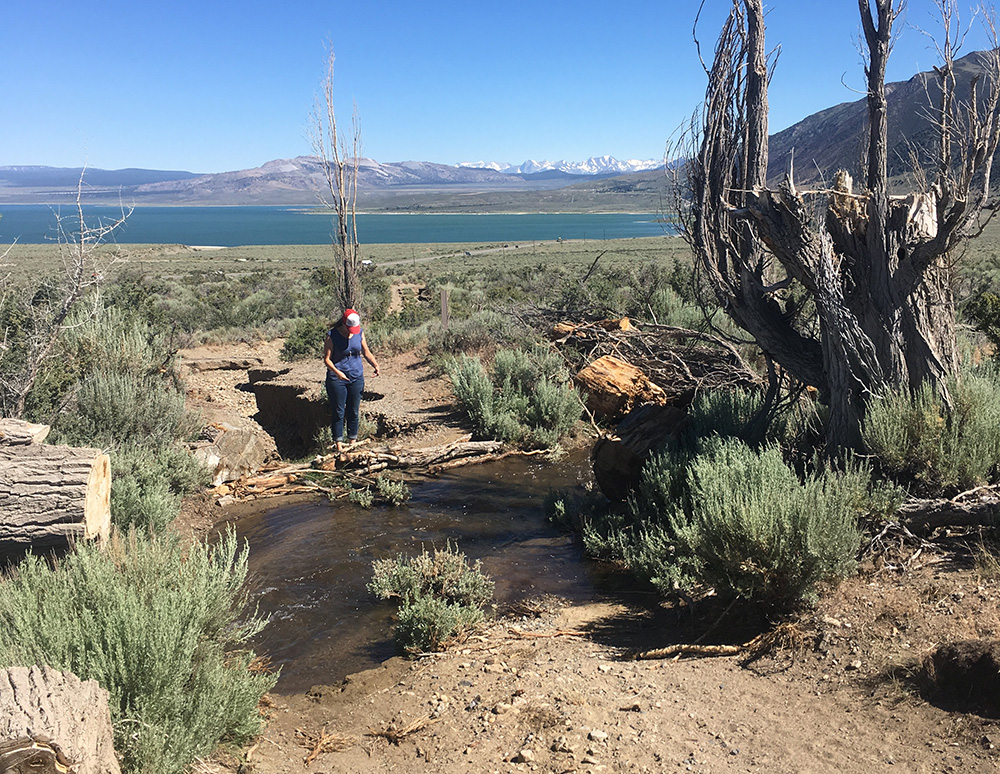
The Mono Lake Committee is serious about protecting and restoring Mono Lake, its tributary streams, and surrounding lands. That means being on constant alert as a watchdog, and recent months have provided some interesting examples of what that requires.

Sometimes the Committee chases issues that have lengthy histories and require continuous pressure to move toward resolution—the 2013 Stream Restoration Agreement with the Los Angeles Department of Water & Power (DWP) is one example. Years of work led to the Agreement, which implements the next phase of stream restoration required by the California State Water Resources Control Board to rejuvenate 19 miles of streams and forest habitat. We celebrated the signing of the Agreement by all parties in 2013, but it has yet to be formalized into a new State Water Board order. A lot of work has been done and progress made in those years, but every detail requires frequent follow up and we’ve found the process tends to grind to a halt without continuous pressure. The Committee’s watchdog role in this context is to take the lead in charting the path forward and prodding progress along among multiple parties distracted by other matters.
Other issues are identified during our routine monitoring, observation, and analysis of water management in the Mono Basin. Committee members know that State Water Board Decision 1631 set an ecologically sound management level for Mono Lake in addition to rules for how much water DWP can export. We routinely ensure that those rules are being followed; one example is our annual lake level reading with DWP each April 1st.
The State Water Board also has rules for how much water must flow in the streams below DWP diversion facilities. The rules can be complex because they vary by time of year, the water year type (of which there are seven, ranging from “Dry” to “Extreme Wet”), and they can be modified by other factors. To ensure continuous implementation of these important rules, the Committee keeps a close eye on daily Mono Basin streamflows at multiple locations.
Sometimes we find problems—a recent example arose in December 2017. DWP lowered the flow in Rush Creek for the winter as expected, but the flow fell below the required minimum of 36 cubic feet per second. On the Friday before Christmas we alerted DWP to the problem, which it subsequently corrected. The source of the trouble? DWP had not followed a special provision in the rules that applies when upstream flows are low and when Grant Lake Reservoir is above a certain level—both of which were the case at the time.
Issues don’t always announce themselves, and the watchdog role requires the Committee to be ever vigilant and ready to craft solutions. A 2017 problem with water escaping from Mill Creek’s channel is one example. After the extremely wet winter, springtime high flows raced down Mill Creek. Committee staff in the field observed a DWP irrigation ditch unexpectedly carrying water in late spring, removing water from Mill Creek without apparent purpose.

We investigated—why was DWP operating the ditch? The result was interesting: DWP was as surprised as we were. It hadn’t activated the ditch, and the DWP diversion headgate was sealed shut. It turned out that a logjam in the main channel of Mill Creek had developed, capturing cobbles and gravel and raising the elevation of the streambed. We generally support natural stream-shaping processes, but in this case the change was causing a new, small—but significant—sideways flow, causing water to pour into the irrigation ditch downstream from the headgate. At first the issue seemed likely to fix itself after high flows subsided, but as summer ended the ditch still carried water, so the Committee started figuring out how to get the problem fixed.
The situation is unusual. DWP is responsible for the ditch, but the logjam creating the problem is on Forest Service land, squarely in the middle of the stream and thus also under California Department of Fish & Wildlife jurisdiction. With no single agency directly responsible, the Committee has taken the lead, working with all three agencies to put the issue on their priority lists, craft a solution, and get the problem fixed as quickly as possible.
In the big picture, the Committee’s watchdog role on the day-to-day level is vital to ensuring that the many protection and restoration measures we have won through our advocacy efforts deliver the intended benefits of a healthy Mono Lake and thriving tributary streams.
This post was also published as an article in the Winter & Spring 2018 Mono Lake Newsletter (pages 4 and 17).
